Molding & Casting Week
This week we had to design a mold, mill it using a desktop milling machine and cast it.
I first decided to design a ballerina and make a keychain out of it.
Designing the ballerina
I cheated a bit! I found a ready image of a ballerina online, I imported it into Inkscape used the Trace Bitmap Feature and then imported it into Solidworks.
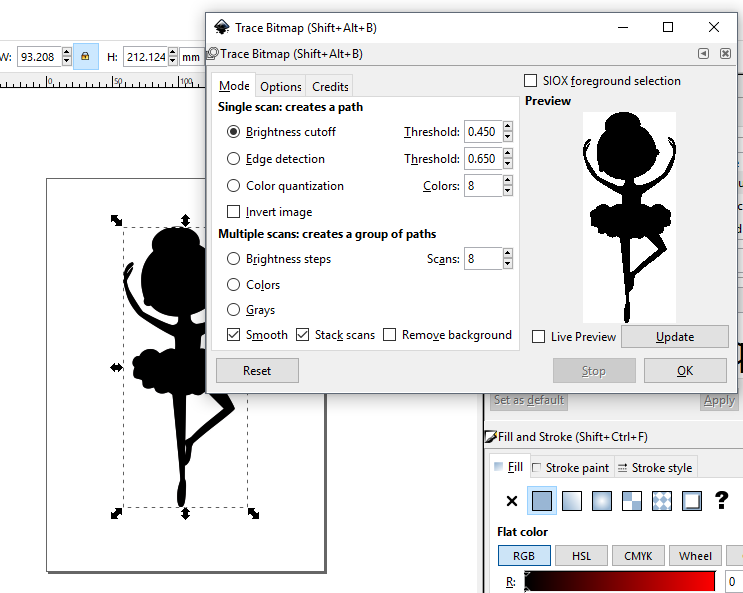
After importing it in Solidworks, I figured out that the arms of the ballerina are too thin and there are some parts that are too small for the tool to go in, so I had to re-adjust the design.
To do that I used the Spline tool.
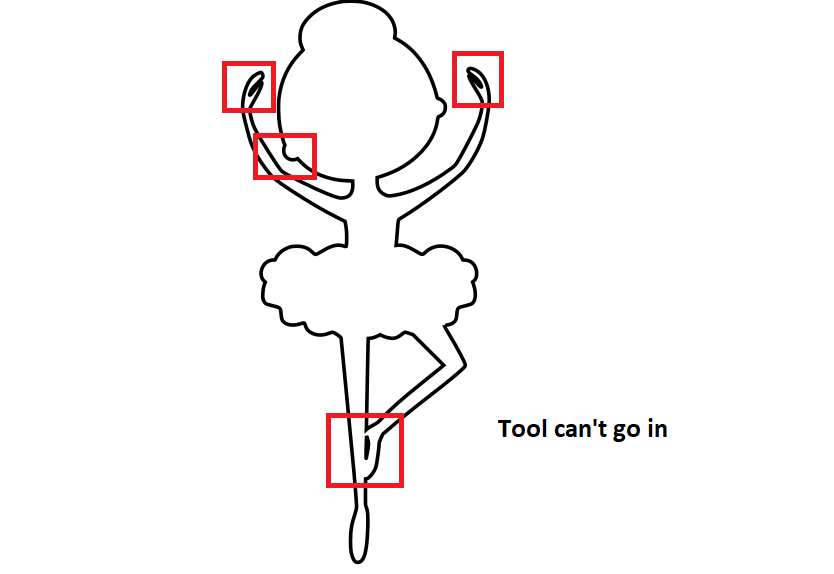
I might have deformed the ballerina a bit :P
But I had to let go of the fingers so it won't cause problems during the milling.
I sketched a rectangle around it and offset it as seen below.
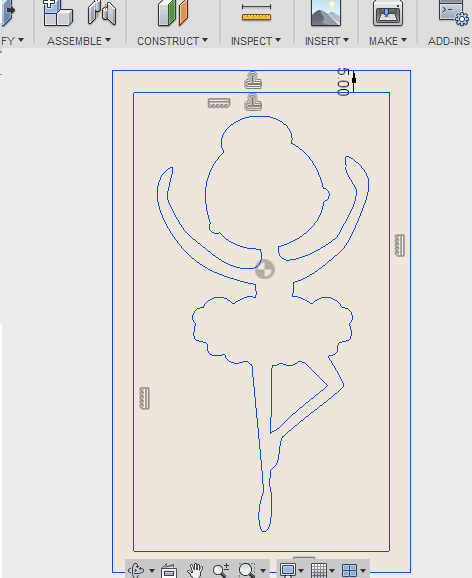
After that I started extruding. I extruded the ballerina with distance 38mm, cause that's the thickness of my wax block.
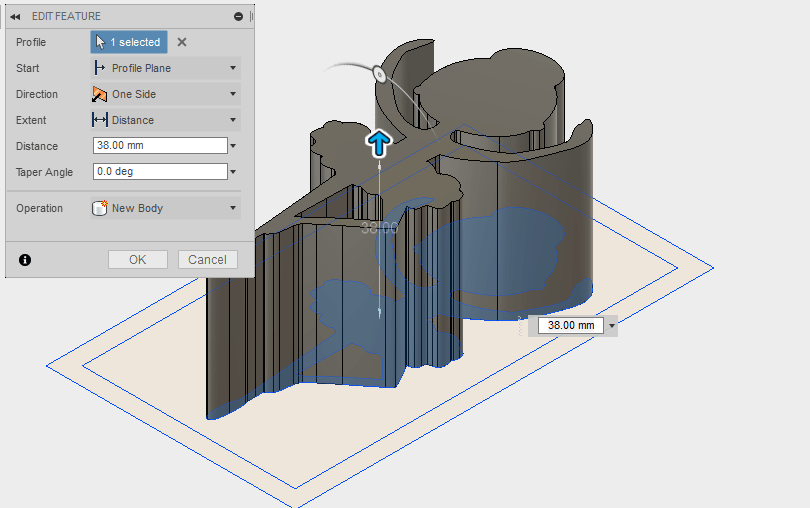
I extruded the inner rectangle with thickness of 28mm because I want the ballerina to have a thickness of 10mm when it's casted.
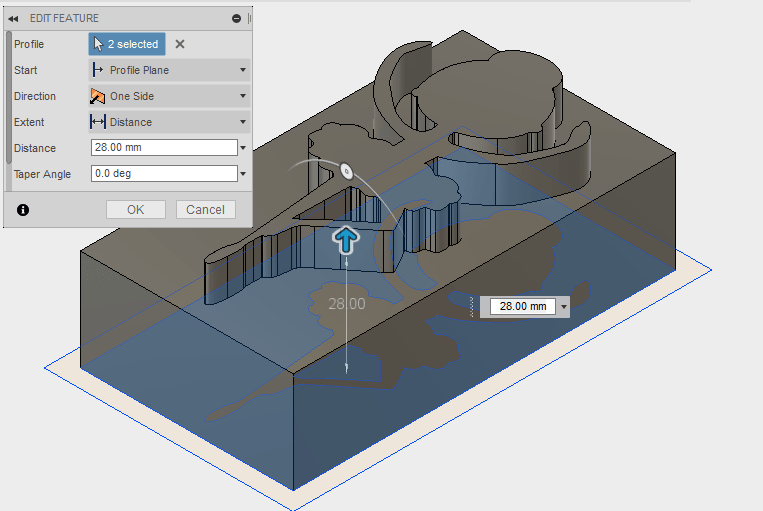
Finally, I extruded the outer rectangle with distance of 38mm the same as the thickness of my wax block.
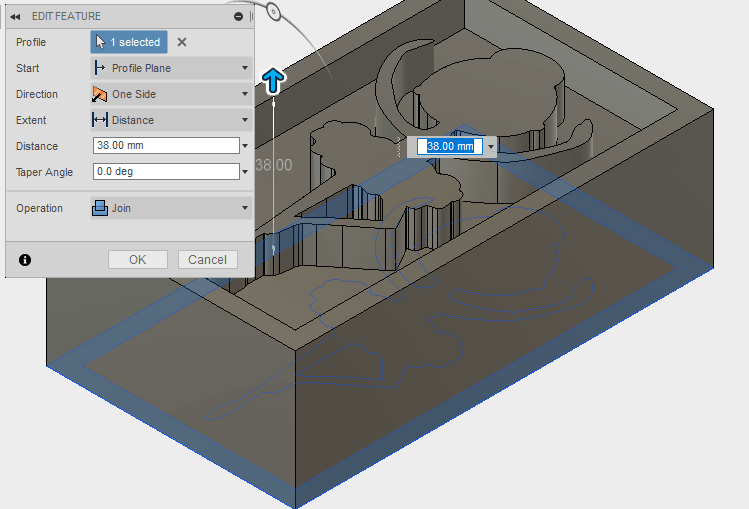
Now, my design is ready to be milled! The only thing that's left is for me to export it into an STL file.
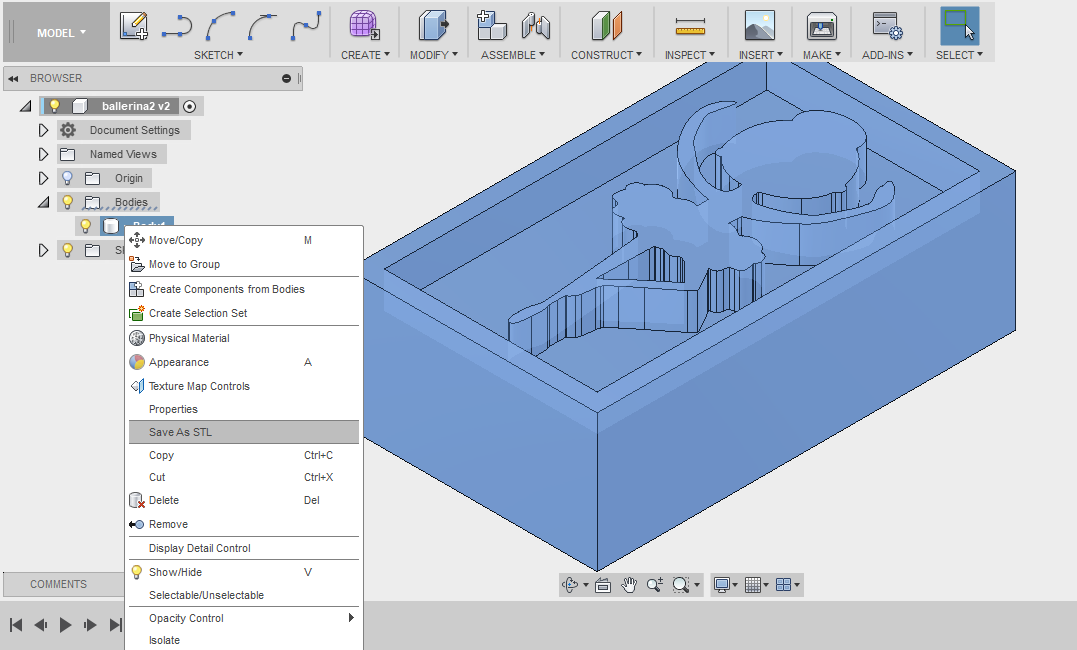
Milling the Ballerina
Now that I have my STL file ready, I have to configure the settings for the Roland SRM-20 to mill it properly.
The CAM software I used for that is the one that came with the Roland which is Modela.
I first set the origin for the model so it can be milled properly.
Then I set the settings for the Roughing Process. The tool I used is a flat 3.175mm drillbit.
The settings are seen in the below screenshots.
The cool thing about this software is that it gives you a simulation for the job and an estimated finish time. Based on the simulation, the roughing job needs an hour and fifteen minutes.
I fixed the wax block on the bed of the milling machine using double face tape then launched the roughing job.
Next, I set the settings for the finishing. The tool I used is the ballnose 3.175mm. The rest of the settings is seen below.
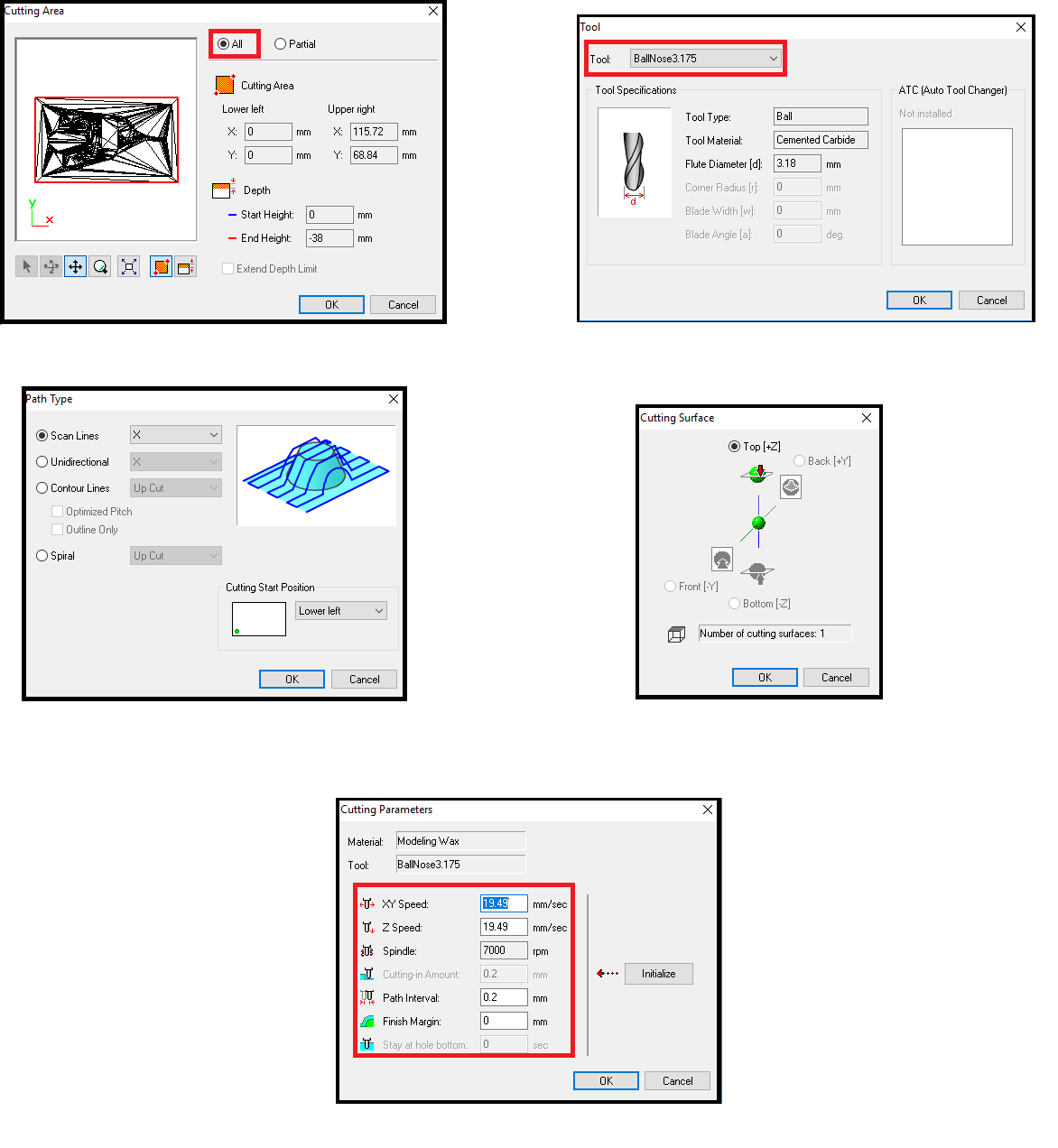
According to the simulation of the finishing job it needed 49 minutes.
I forgot to add a hole in the design for the keychain, so I set the zero for the x & y where I want the hole to be, and I started lowering the z slowly till it hit -10mm.

The result was pretty awesome! It was so smooth you can't even see any lines.
Creating the Mold
To start pouring in the silicon, I first created a box around the milled wax using scrap acrylic as seen below. I used double face tape to make sure it holds in place.
Then I started mixing the material. I decided to use Smooth on Ecoflex 00-50.
This material is used with one-to-one portions of part A and part B. Its low viscosity allows easy mixing and easy deairing to get rid of bubbles.
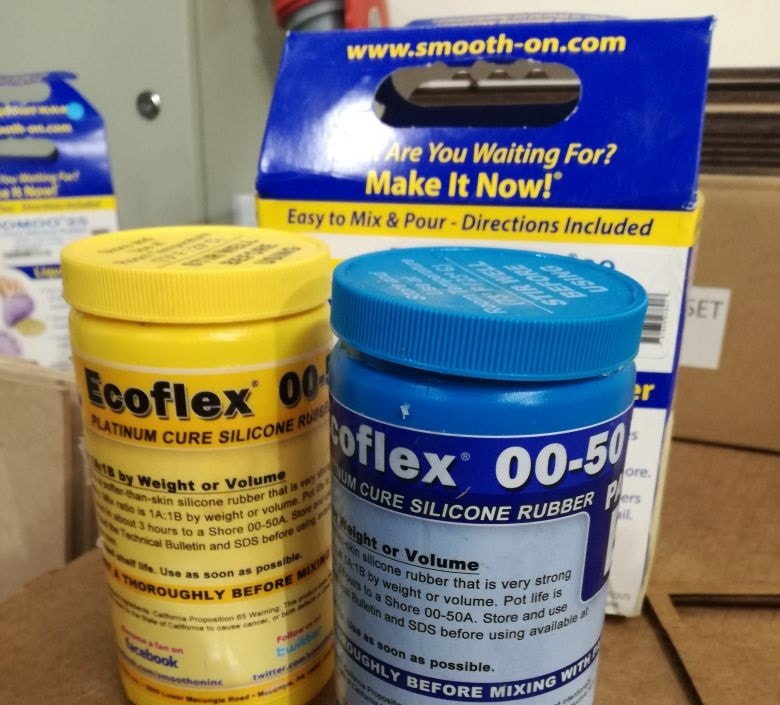
I made sure I mixed the material well before removing the air from it using Vaccum.
According to the datasheet of the ecoflex 00-50, it needed to be vaccuumed for 2-3 minutes before pouring it into the wax.
Next, I slowly poured it into the milled wax as seen below.
According to the datasheet, we can let the rubber cure at room temprature, we can post cure the rubber by exposing it to 176°F/80°C for 2 hours and 212°F/100°C for one hour, which will aid in quickly attaining maximum physical and performance properties. But since I was going to leave it overnight, I figured it won't be needed.
The next day, I came to the lab to this beauty!
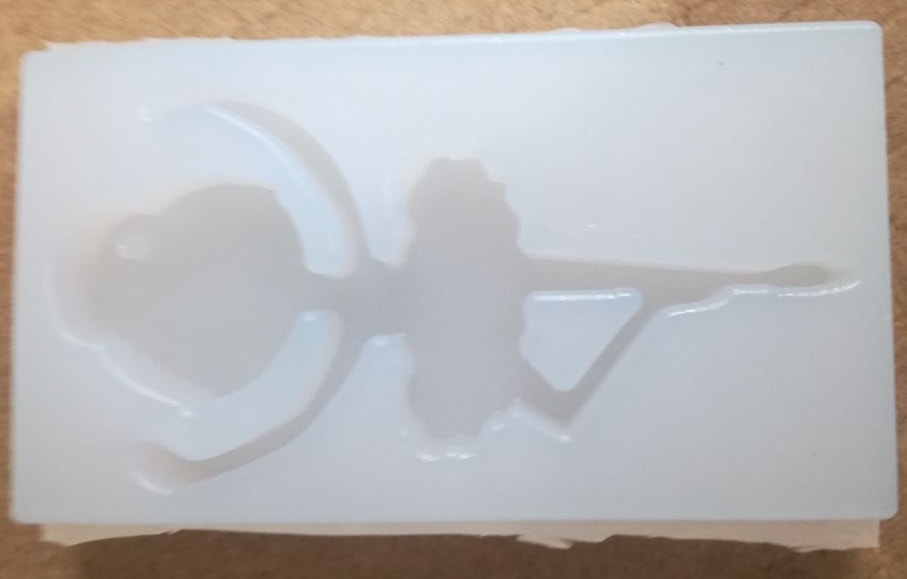
Casting the ballerina
I decided to use a material called liquid plastic to cast my ballerina. My expectation was for it to be rigid.
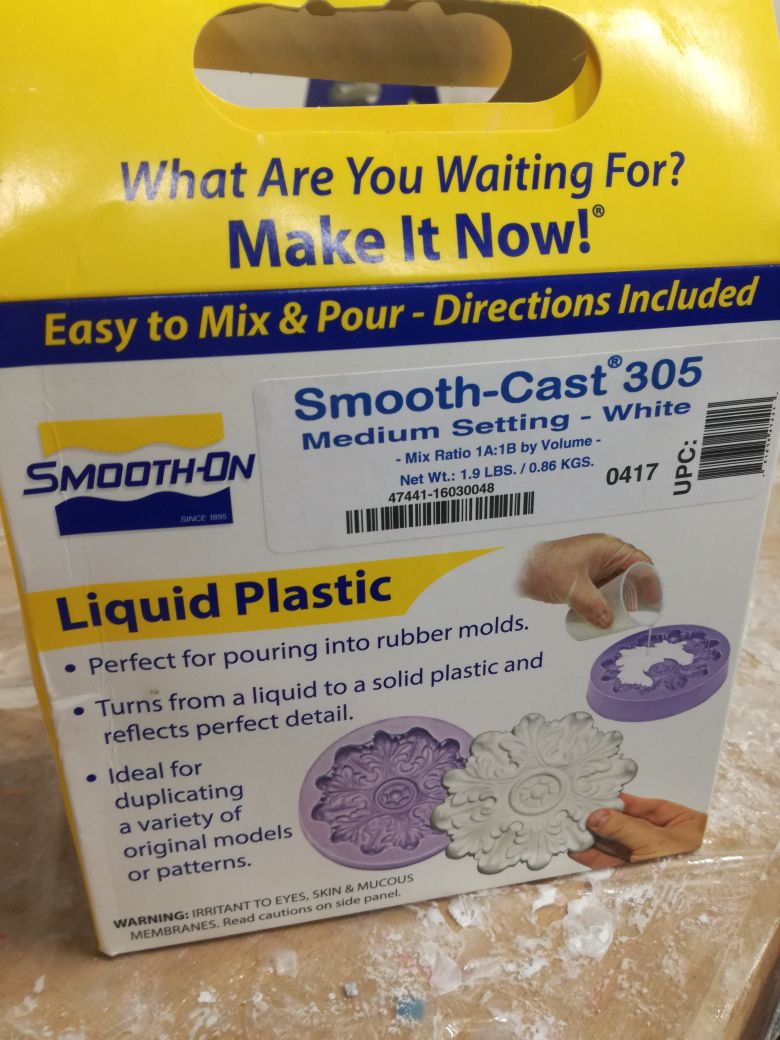
The material is Smooth-Cast 305 . The ratio for this is also 1A:1B. I added some coloring to the material.
Smooth-Cast® 305 will cure in 30 - 40 minutes, it is recommended to post cure the cast for 4 - 6 hours at 65°C, but I left it overnight.
You can see the process of mixing and pouring the material into the mold in the below video.
The next day, I came and removed the cast but it was too fragile and it broke :(
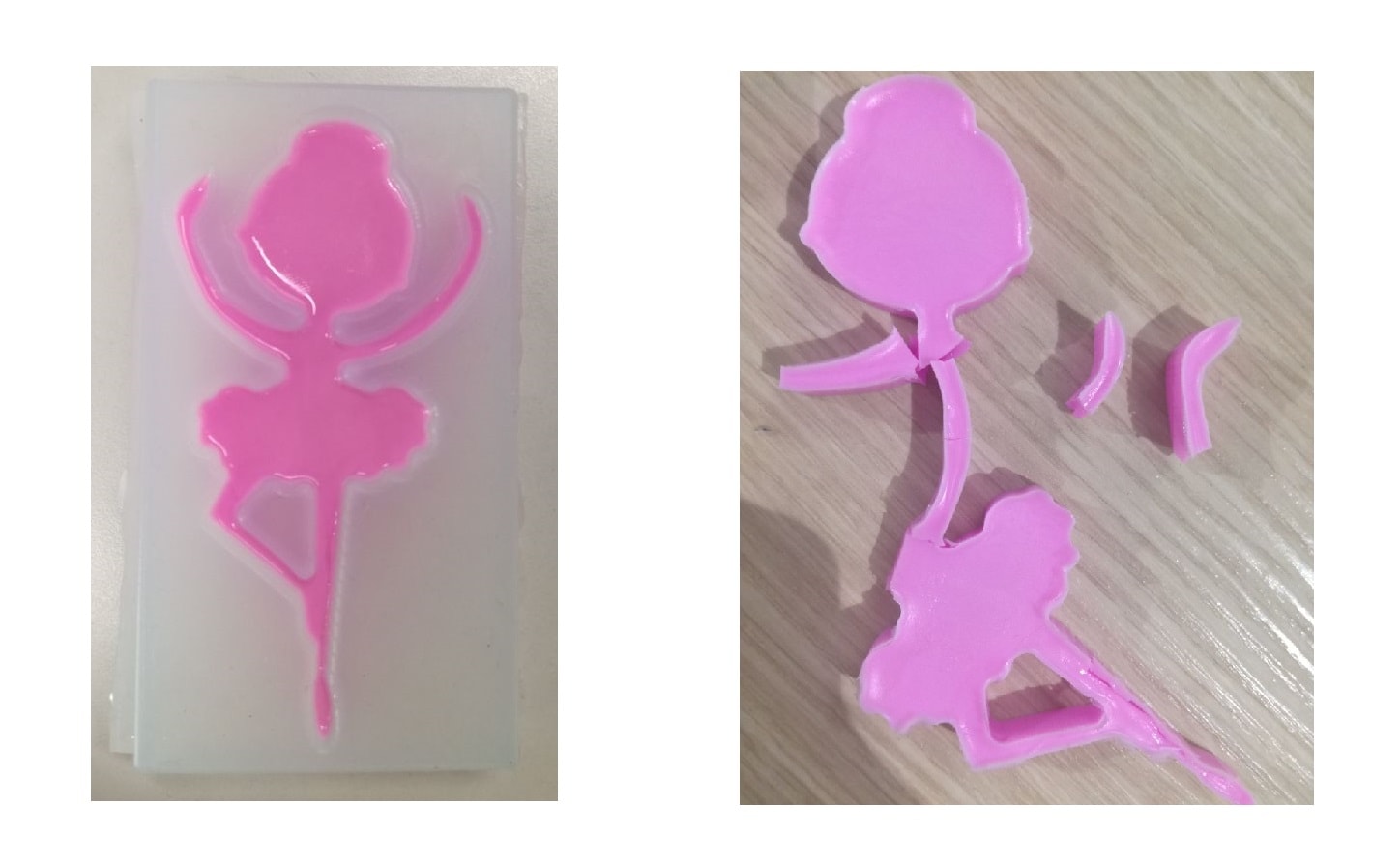
I decided to cast it again using echo-flex and the result is seen below.
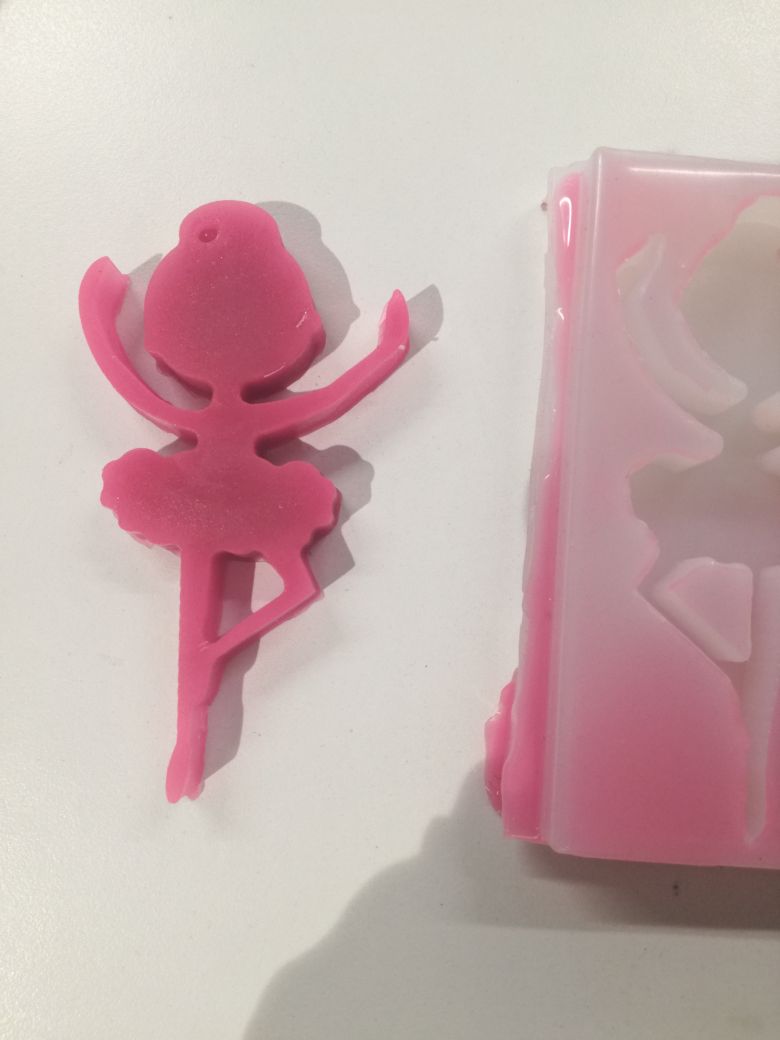
I also wanted to cast it using resin and the result was crystal like as seen below.
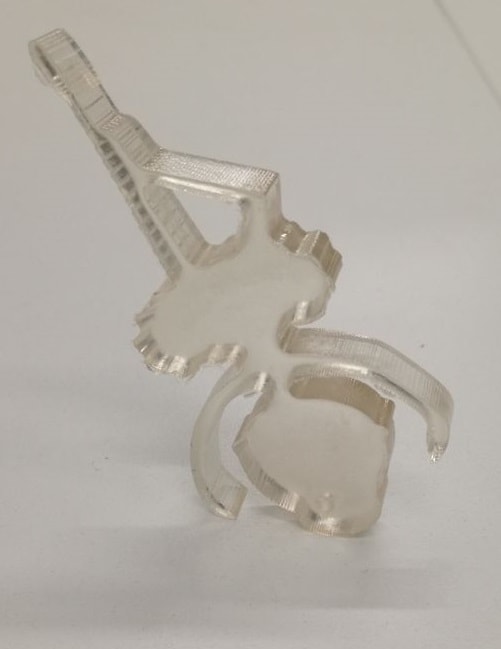
Designing My Coin
I also wanted to design my own coin. To do that, I used Fusion 360, I first inserted my photo in inkScape and used Trace Bitmap to have my face's outline, I then saved it as DXF and inserted it into Fusion 360.
The finished design for my double sided coin is seen below.

I decided to try milling it using the Roland SRM-20 using the same settings but with smaller drill bits. The result wasn't as I expected, partly cause my design was too small and the drill bit went loose, I was SHOCKED when I opened the roland and saw it without a drill bit - OPS!!
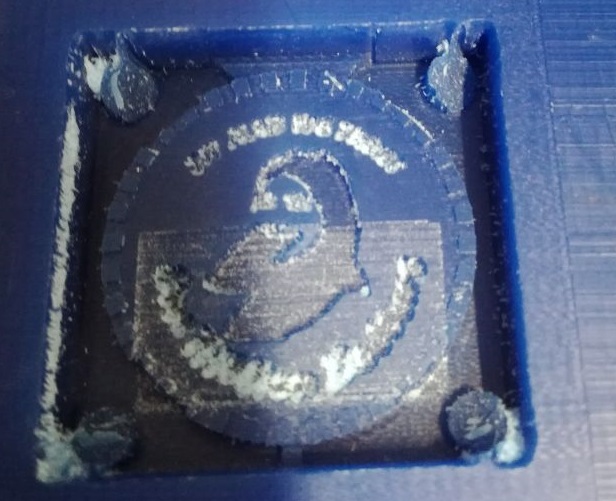
I decided to scale it up a bit and this time try using the 3D Printer instead of milling it. I used the Ultimaker 2+ with a 0.25mm nozzle. The print took 10 hours and 45 minutes. The settings I used are seen below.
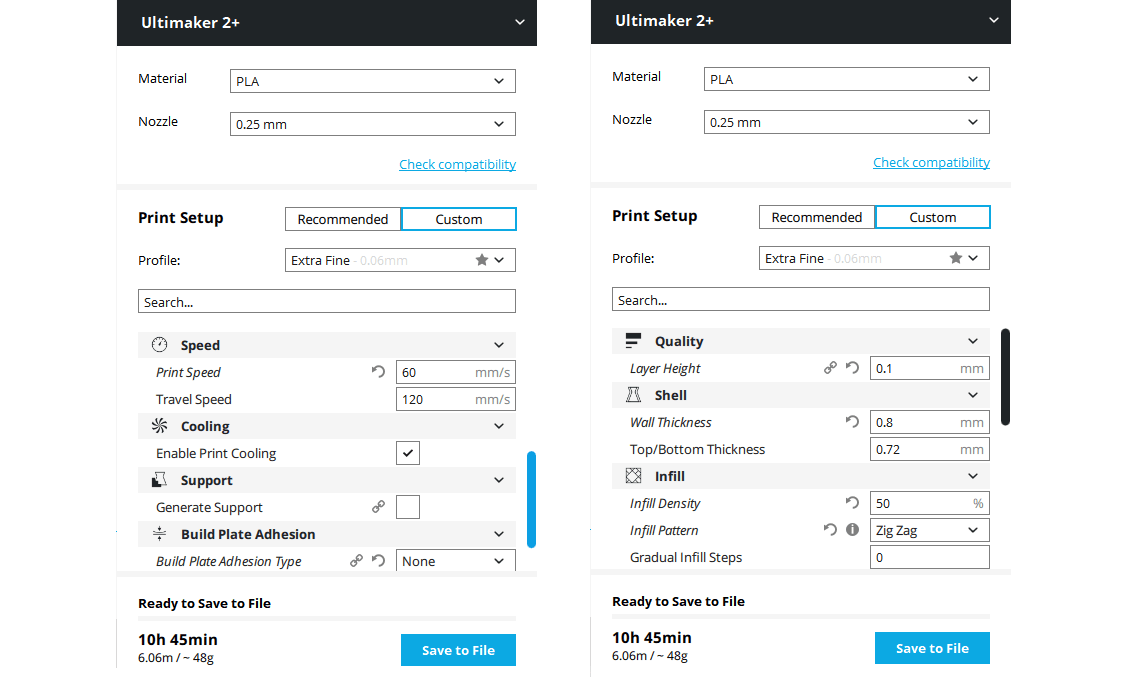
The result for the print was pretty good, my face is quite clear! Next step is to pour silicon in it.
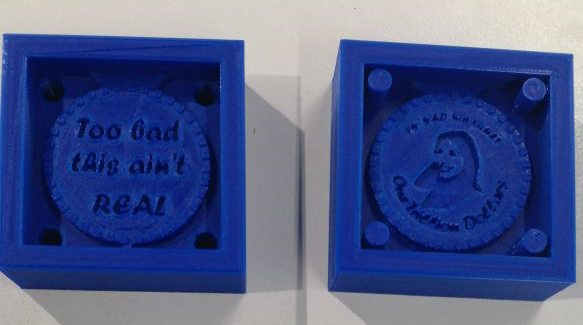
I also wanted to mill a 3D shape, so I designed a cup using fusion, sliced it in half then put it inside my wax bar, the same way I did with the ballerina.

Next, I set the settings for the roughing as follows:
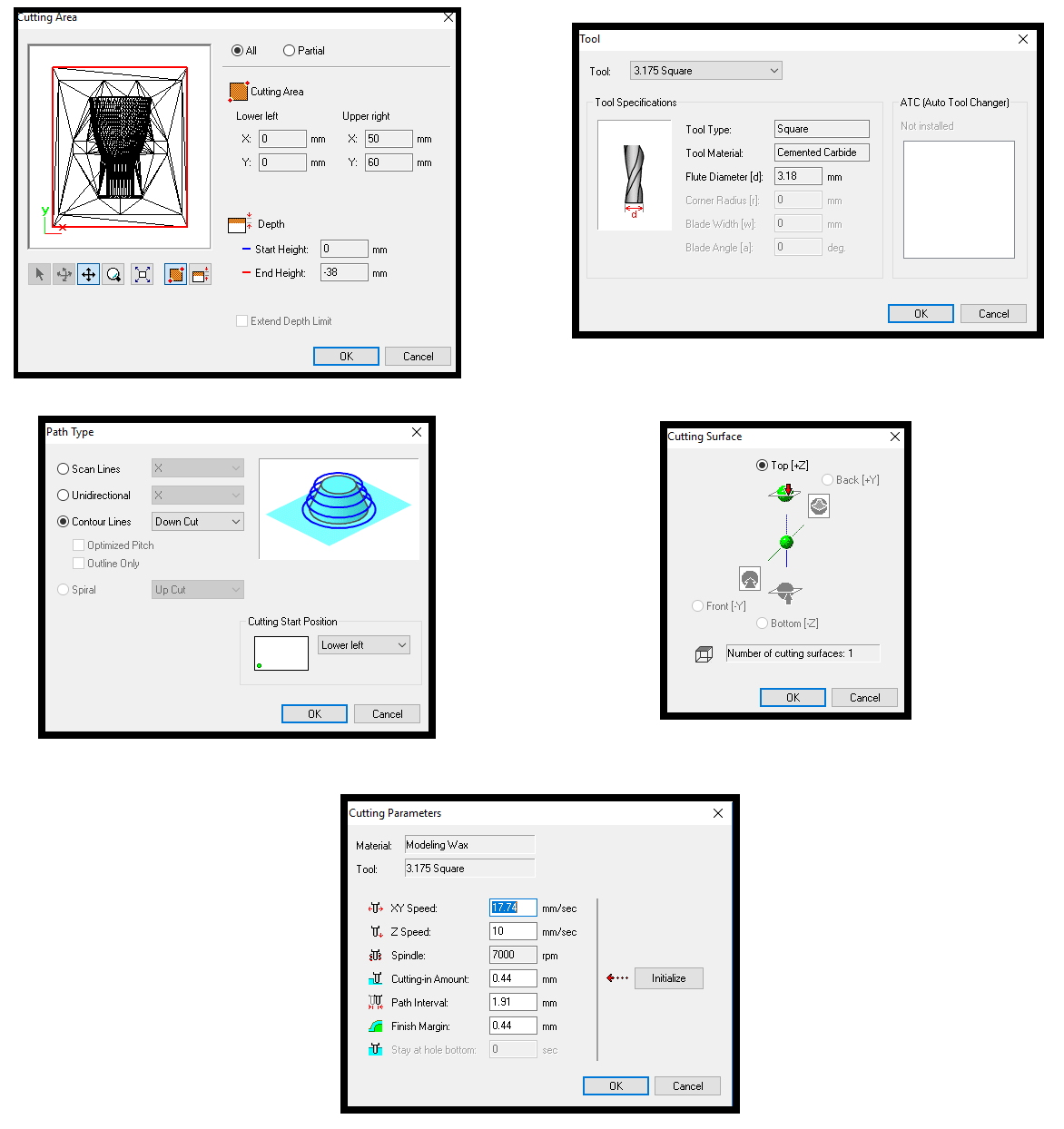
As for finishing, I used a smaller tool, 1/8" ballnose endmill to give a better finishing. In the settings the only thing I changed is the path type to scan lines instead of contour.
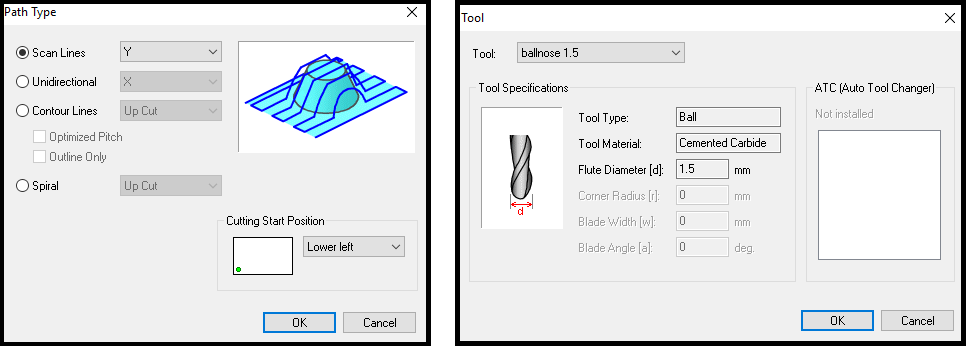
I cast the mold using Oomoo 25 which also has part A and part B. This material is used with one-to-one portions of part A and part B.
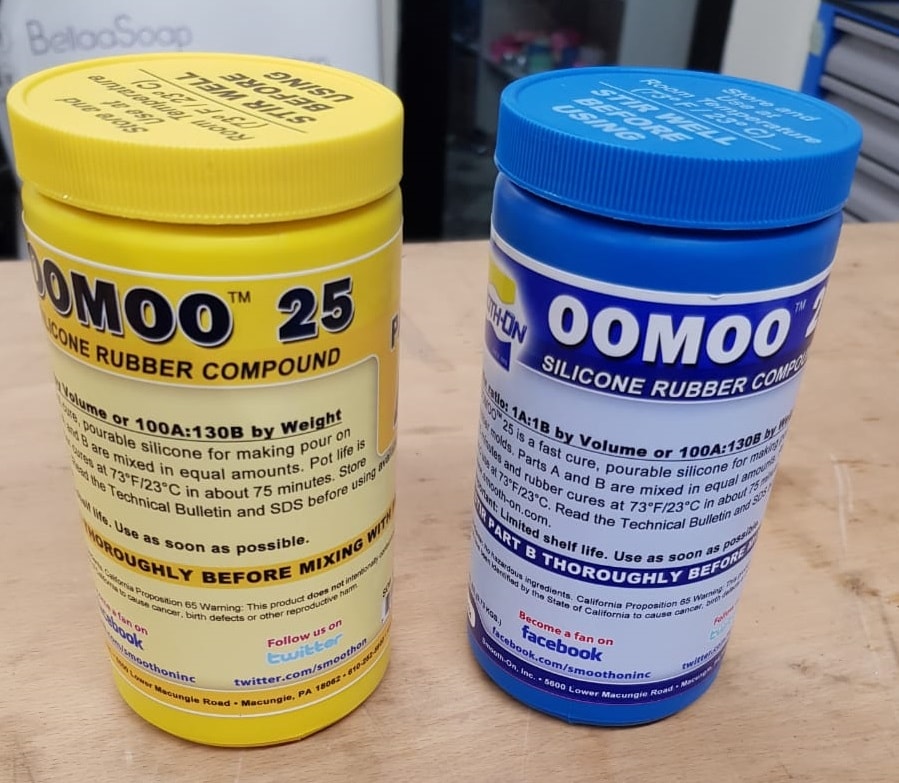
The end result is amazing! I fell in love!
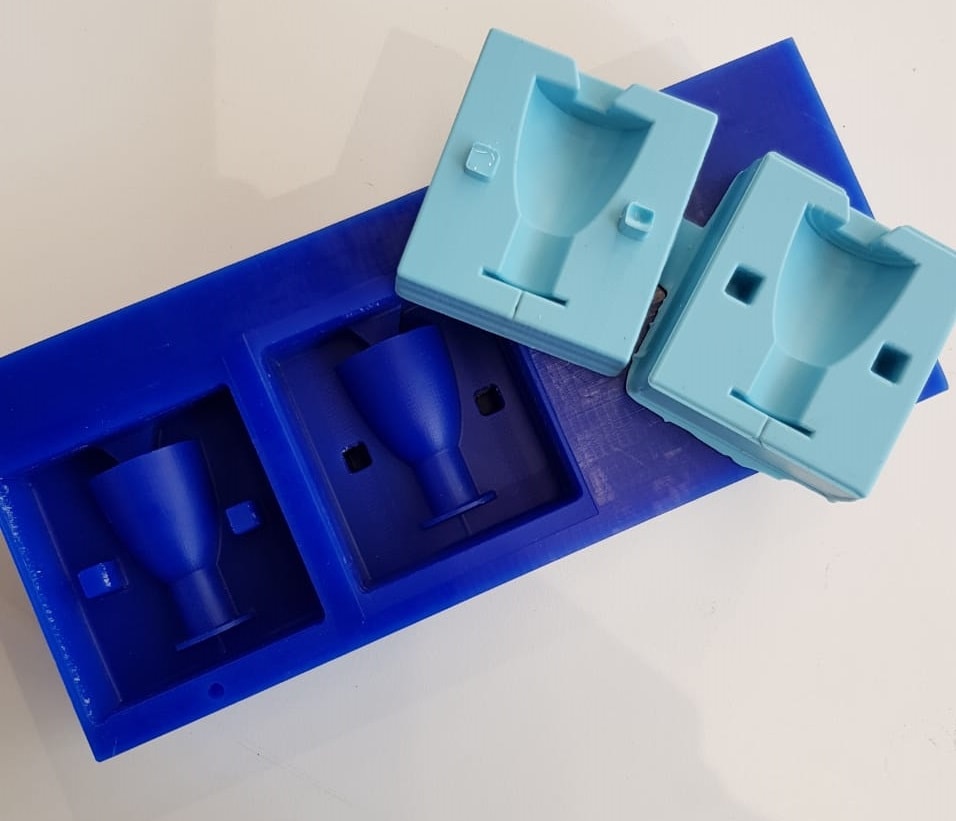
Problems
Other than fixing the parts where the drill bit can't go through, I had a problem milling the finishing of the ballerina because I chose a wrong tool, I chose the ballnose, the end result was not so bad but I should have chosen the flat endmill to have a smoother finish.
Another problem was fixturing of the endmill to the roland while milling the coin as I mentioned before. I think if I scale up the design and use the endmills that are used for creating PCBs, the details will definitely be seen.
You can download my files here.